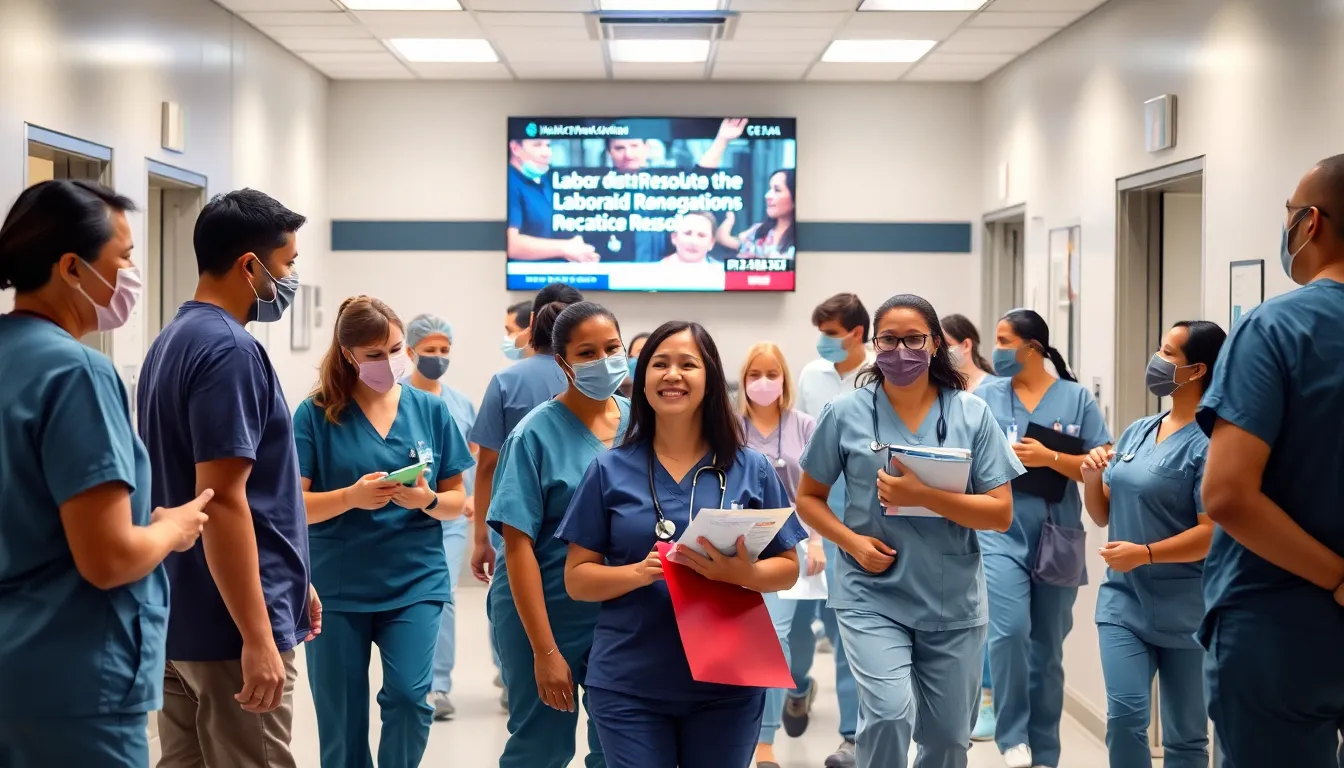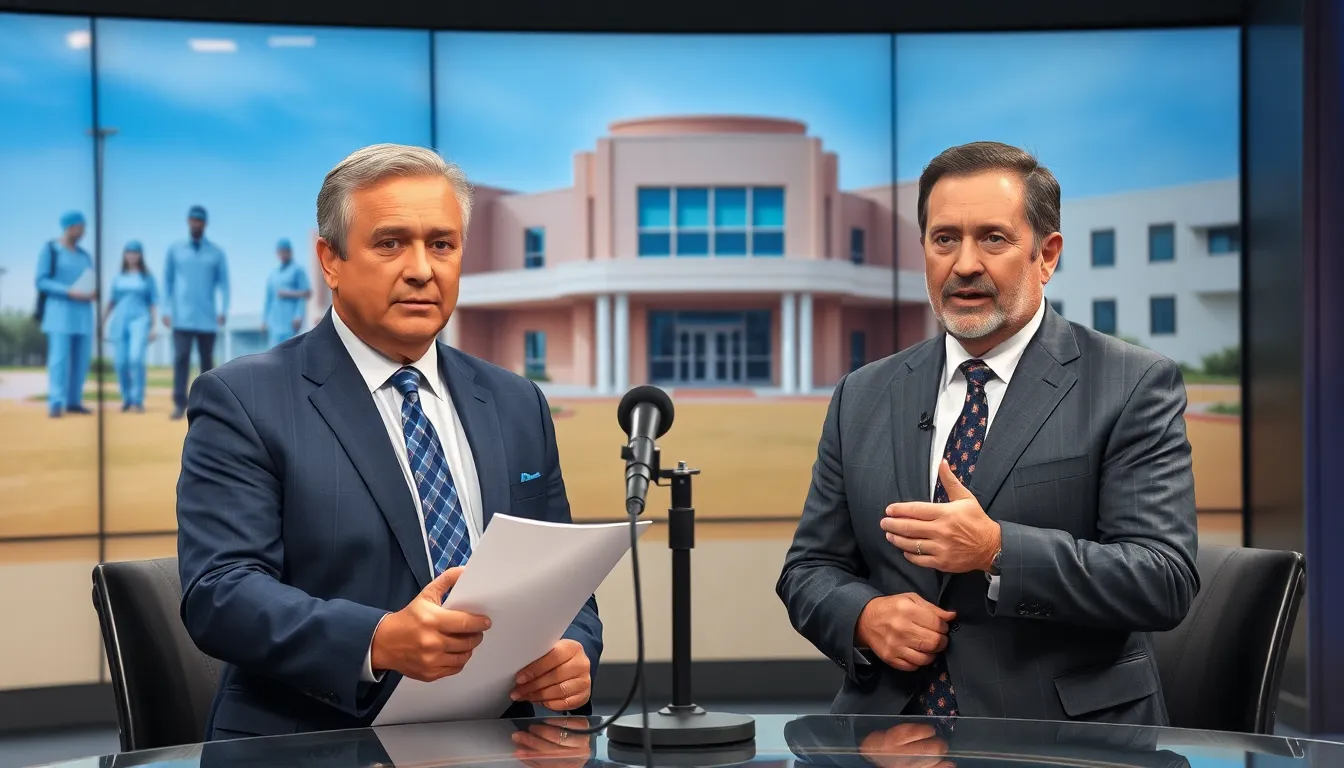The recent announcement that Thousands of Kaiser Permanente healthcare workers conclude 5-day strike marks a critical turning point for patient care and labor relations across the healthcare sector. This significant work stoppage has ended a period of operational disruption, shifting focus from conflict to rebuilding and stability within a major healthcare system.
Key Implications:
- Patient Care and Operational Continuity: The five-day strike caused substantial operational disruptions, including potential patient backlogs, rescheduled appointments, and strained services, underscoring the vital role of healthcare professionals.
- Systemic Labor Challenges and Industry Trends: The strike emerged from deeper industry issues such as staffing, compensation, and workplace conditions, situating it within a growing wave of healthcare labor actions often influenced by broader economic pressures and regulatory discussions.
- Labor Relations and Future Stability: The conclusion initiates a crucial phase of rebuilding trust, evaluating underlying grievances, and influencing future labor negotiations, signaling that effective dispute resolution and workforce well-being remain paramount for healthcare stability.

Key Message
A significant development for the healthcare sector was the announcement that Thousands of Kaiser Permanente healthcare workers conclude 5-day strike. This substantial work stoppage involved a critical segment of the healthcare workforce. Its resolution was publicly aired in a news segment on October 19, 2025. This date signifies the formal communication of the strike’s end.
The conclusion brought a close to a period of uncertainty and operational disruption for a major healthcare system. The term “work stoppage” for healthcare professionals at an organization like Kaiser Permanente carries immense weight. These individuals are integral to daily patient care, emergency services, and overall medical facility functioning.
A five-day absence means critical services may be strained. Appointments could be rescheduled, and continuity of care might face significant challenges. Such events underscore the vital role these professionals play in public health. The conclusion, or resolution, of this five-day strike marks a crucial turning point.
It suggests the active labor dispute has ended. This allows for a return to standard operations and a resumption of full services. This development is met with relief by patients, management, and the healthcare workers themselves. They can now focus entirely on providing care. The news that Thousands of Kaiser Permanente healthcare workers conclude 5-day strike shifts focus from conflict to rebuilding and stability.
The Role of News Reporting in Labor Dispute Resolution
The detailing of the event’s resolution in a news segment on October 19, 2025, highlights the critical role media plays. Media publicizes significant labor disputes. News segments serve as an essential channel for informing the public, patients, and various stakeholders. They provide official confirmation and crucial context.
This clarification covers the outcomes of negotiations and immediate service implications. The specific date of October 19, 2025, becomes a definitive timestamp. It marks when this significant information became widely accessible. This broadcast offered a formal announcement to a broad audience.
It outlined how the prolonged five-day work stoppage was brought to an end. Timely and accurate reporting in these high-stakes situations is paramount. It ensures transparency and reduces speculation about vital healthcare providers. This helps manage public expectations for accessing care.
Broader Implications of a Five-Day Work Stoppage
A “five-day work stoppage” by thousands of healthcare workers is more than a brief interruption. It represents a substantial period of operational and logistical challenge for a major healthcare provider. During such a duration, healthcare systems must implement contingency plans. This often results in diverted ambulances and postponed elective surgeries.
Reduced clinic hours also occur. The cumulative impact can affect patient backlogs and stress remaining staff, even after the strike concludes. Large-scale labor actions often emerge from underlying systemic pressures within the healthcare industry. These include debates over staffing levels, compensation, benefits, and workplace conditions.
All these directly influence patient care quality and worker morale. Discussions surrounding these issues sometimes intersect with broader industry trends. One example is the increasing influence of private equity regulation in health care. These regulations aim to protect patients by ensuring financial considerations do not compromise the delivery of essential healthcare services or the well-being of the workforce.
The fact that Thousands of Kaiser Permanente healthcare workers conclude 5-day strike implies a complex aftermath. This extends beyond the immediate return to duties. The period following a strike often requires significant effort. This includes restoring trust and cohesion among staff and management.
It also prompts an assessment of the factors that led to the stoppage. This has ongoing implications for labor relations and healthcare system stability. The resolution, while a positive step, often initiates a new phase of evaluation and adjustment.

Data & Evidence
The conclusion of a significant labor action recently saw thousands of Kaiser Permanente healthcare workers conclude 5-day strike, an event that resonated across the healthcare industry and media landscapes. This concerted industrial action by a substantial portion of Kaiser Permanente’s workforce highlighted ongoing tensions and critical demands within one of the nation’s largest integrated healthcare systems. Such large-scale demonstrations serve as powerful indicators of underlying issues impacting both healthcare professionals and the patients they serve.
The specific period of this industrial action spanned a consecutive five-day duration, a length that typically signifies deep-seated disagreements and robust negotiation efforts. A strike of this magnitude and duration in the healthcare sector inevitably leads to service disruptions, requiring complex contingency plans and often resulting in deferred appointments or increased wait times for non-emergency care. The collective decision by so many workers to withhold labor for this extended period underscores their resolve and the perceived urgency of their grievances.
Comprehensive Media Coverage and Expert Analysis
Public awareness regarding the strike’s resolution was significantly shaped by extensive media coverage, notably an in-depth segment aired by NPR (National Public Radio). This broadcast was scheduled for October 19, 2025, at 8:00 AM ET, as part of NPR’s highly-regarded Weekend Edition Sunday. The choice of a weekend morning slot ensured maximum listener engagement, allowing a broad demographic to stay informed about critical developments concerning a major healthcare provider and its employees.
The NPR report featured an audio contribution from seasoned journalist Don Gonyea, known for his comprehensive coverage of labor and political issues. Gonyea’s report was enriched by the expert commentary of labor specialist John August. Mr. August’s insights are crucial for listeners seeking to understand the intricate dynamics behind the strike, including the specific demands of the workers, the management’s responses, and the broader economic or policy contexts influencing the dispute. His analysis helps demystify complex industrial relations for the general public.
The audio segment dedicated to this important topic, incorporating Don Gonyea’s reporting and John August’s expert perspective, had a precise runtime of 6 minutes and 3 seconds. This specific duration suggests a carefully crafted piece designed to provide a comprehensive overview without overwhelming the listener. The meticulous timing allows for the exploration of key facts, a summary of the dispute, and an analytical interpretation from a recognized expert, thereby offering substantial informational value within typical radio segment constraints.
Evaluating the Broader Impact on Healthcare Labor
The conclusion of the Kaiser Permanente strike, as documented by NPR and further analyzed by experts, contributes valuable data to the ongoing discourse about labor conditions in the healthcare industry. Such strikes are often symptomatic of wider systemic challenges, including issues like inadequate staffing levels, competitive wage structures, and the impact of corporate decisions on frontline medical personnel. The collective voice of thousands of workers is a powerful indicator of areas requiring significant attention and reform within large healthcare organizations.
Analyzing the specific duration of the strike and the nature of its media coverage offers insights into how labor disputes gain public traction and influence policy discussions. The fact that a prominent national broadcaster like NPR dedicated significant airtime, including expert commentary, underscores the national relevance and impact of such an event. It reflects a growing public interest in the stability and fairness of the healthcare workforce, directly linking employee welfare to the quality of patient care.
Moreover, the dialogue surrounding such labor actions frequently touches upon the financial structures and regulatory frameworks governing healthcare providers. For instance, discussions may arise concerning how private equity regulation in healthcare sweeps the nation, protecting patients, might intersect with the financial pressures leading to worker grievances. These broader systemic connections illustrate the complex web of factors that contribute to industrial unrest and the critical importance of robust oversight in the healthcare sector.
The detailed factual account of the strike’s conclusion, its duration, and its broadcast analysis provides tangible evidence for researchers, policymakers, and the public. These elements help in understanding the scope of worker mobilization and the effectiveness of their advocacy efforts. They form a foundational data set for evaluating the evolving dynamics of labor relations within essential services, particularly in an environment where healthcare demands are continuously increasing.
Ultimately, the reported specifics of how thousands of Kaiser Permanente healthcare workers conclude 5-day strike are more than mere statistics; they represent a significant moment in contemporary labor history. They provide concrete data points for understanding the persistent challenges faced by healthcare workers and the critical role of media and expert analysis in shaping public perception and policy dialogue around these vital issues.

Content Focus
The recent conclusion of a five-day strike involving Thousands of Kaiser Permanente healthcare workers marks a pivotal moment within the American healthcare sector. This significant labor action, a testament to the evolving dynamics between healthcare providers and their workforce, has profound implications. Its cessation represents not merely an end to a specific dispute but also a critical inflection point in understanding contemporary labor relations. The scale and impact of such a large-scale strike highlight the intricate challenges facing major healthcare systems.
This event is understood not in isolation but as a key event in the broader labor relations landscape within the healthcare sector. It underscores persistent tensions related to staffing levels, wages, benefits, and workplace conditions that have escalated since the pandemic. For both workers and management, the outcome of this strike will undoubtedly shape future negotiations and strategies. It also draws attention to the essential services provided by healthcare professionals and the societal impact when those services are disrupted.
The Evolving Landscape of Healthcare Labor Relations
The “labor relations landscape” in healthcare is a complex arena, characterized by collective bargaining, unionization efforts, and a continuous push-and-pull between employee advocacy and employer operational demands. This landscape is currently under immense pressure. Factors such as chronic staffing shortages, increased patient loads, and the rising cost of living contribute to significant worker discontent. Healthcare workers, often at the frontline of demanding and stressful environments, increasingly seek improved conditions and fairer compensation.
Such organized labor actions serve as a powerful mechanism for workers to voice their grievances collectively. They aim to secure agreements that address systemic issues affecting their well-being and, by extension, patient care quality. The successful resolution of disputes like the one involving Thousands of Kaiser Permanente healthcare workers can set precedents for future negotiations. It can influence how other healthcare systems approach their own labor challenges, either inspiring similar actions or prompting proactive solutions from management. This makes understanding each resolution critical for stakeholders across the industry.
A Growing Tide of Industry-Wide Strikes
An NPR report positioned this specific event within the broader context of a growing number of strikes observed across the industry. This analysis, reinforced by insights from a labor expert, indicates a significant trend. The healthcare sector is experiencing an unprecedented wave of industrial action, reflecting deep-seated issues that resonate beyond individual institutions. These escalating disputes signal a nationwide challenge in maintaining a stable and satisfied healthcare workforce.
The labor expert’s analysis points to several contributing factors behind this rise in strikes. Economic pressures, including inflation and stagnant wages, are primary drivers. Additionally, workers are demanding better patient care standards, which they argue are compromised by understaffing and excessive workloads. The increasing corporatization of healthcare, including the influence of private equity, also plays a role in these dynamics. These trends often lead to pressure on staffing and resources, exacerbating existing tensions.
Implications and Future Outlook for Healthcare
The cessation of the strike by Thousands of Kaiser Permanente healthcare workers conclude 5-day strike has immediate and long-term implications. For Kaiser Permanente, it means a return to full operational capacity and an opportunity to rebuild trust with its workforce. However, the underlying issues that led to the strike must be comprehensively addressed to prevent future disruptions. The resolution also sends a message to other healthcare systems regarding the power of organized labor in an era of heightened worker advocacy.
Beyond individual organizations, this growing trend of strikes affects the entire healthcare ecosystem. Patients may experience service disruptions, while healthcare providers face increased scrutiny and pressure to find sustainable solutions. There is a growing awareness that systemic issues require systemic responses, which may include policy changes and enhanced regulatory oversight. For example, discussions around private equity regulation in healthcare are gaining traction, aiming to protect patients and workers from profit-driven decisions that could compromise care quality or worker conditions.
The overall outlook suggests that labor relations will remain a critical focus area for healthcare leaders. Effective dispute resolution mechanisms are essential to maintain stability and ensure continuous patient care. Investment in workforce well-being, competitive compensation, and adequate staffing levels will be paramount. The trend identified by the NPR report highlights that the period of labor unrest is likely to continue. It will require proactive engagement and innovative solutions from all stakeholders to navigate successfully.
Featured image generated using Flux AI
NPR: “Thousands of Kaiser Permanente healthcare workers conclude 5-day strike”
